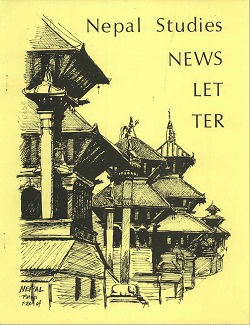Author Biography
Michael Hutt is Professor of Nepali and Himalayan Studies at SOAS (the School of Oriental and African Studies), University of London. He received his BA in South Asian Studies and Ph.D in Nepali Literature from SOAS, and returned there as a British Academy postdoctoral research fellow in 1987. He has been teaching and researching Nepali language, literature and culture at SOAS ever since, and has conducted research in Nepal, Darjeeling, Sikkim and Bhutan. At SOAS, Hutt served as a faculty dean from 2004-10 and from 2014 he is Director of the SOAS South Asia Institute.
Abstract
In his seminal book Literature, Popular Culture and Society, Leo Lowenthal argues that studies of the representation of society, state, or economy in the literature of a particular country or time contribute to our knowledge of ‘the kind of perception which a specific social group—writers—has of specific social phenomena’ and therefore to our knowledge of the ‘history and sociology of shared consciousness’ (1961: 143). This discussion will focus on five Nepali novels published between 2005 and 2010, i.e. during the final months of the internal conflict between the CPN (Maoist) and the monarchical state, and the period of political transition that followed. The novels were selected mainly because they have been widely read and discussed, at least in Kathmandu, and can therefore be seen as possessing sociological as well as purely literary significance. Three of them (Narayan Wagle’s Palpasa Café, Narayan Dhakal’s Pretakalpa, and Krishna Dharabasi’s Radha) won one or other of the two major Nepali literary prizes awarded each year, and the other two (Yug Pathak’s Urgenko Ghoda and Buddhisagar Chapagain’s Karnali Blues) have achieved a high public profile. The paper will summarise the content of these novels and provide some translated extracts. It will then analyse and discuss them, with a particular focus on (a) Dhakal’s, Dharabasi’s, and Pathak’s use of the past (b) the influence of the Maoist insurgency and the imprint of Maoist ideology (c) the location of each novel’s central protagonist in relation to urban metropolitan perspectives and (d) implied and actual readerships. The paper will explore the sociological significance of the commercial success of several of these books in light of the increasingly close relationship between Nepali literature and the Nepali print media. Finally, it will ask whether the expansion of the readership for Nepali novels in recent years is a sign that the Nepali novel is now breaking out of the narrow elite sphere of ‘art literature’ and becoming a part of what Ashish Nandy calls ‘the popular’.
Acknowledgements
The author wishes to thank the British Academy for funding the research that led to the writing of this paper, and to friends and colleagues at Martin Chautari for helping him in so many ways. He is also grateful to Buddhisgar Chapain, Krishna Dharabasi and Yug Pathak for sparing the time to meet and discuss their novels with him.
Creative Commons License

This work is licensed under a Creative Commons Attribution 3.0 License.
Recommended Citation
Hutt, Michael. 2014. Writers, Readers, and the Sharing of Consciousness: Five Nepali Novels. HIMALAYA 34(2).
Available at:
https://digitalcommons.macalester.edu/himalaya/vol34/iss2/6



